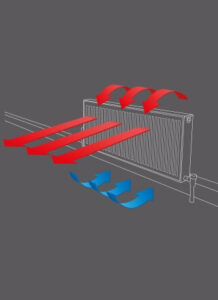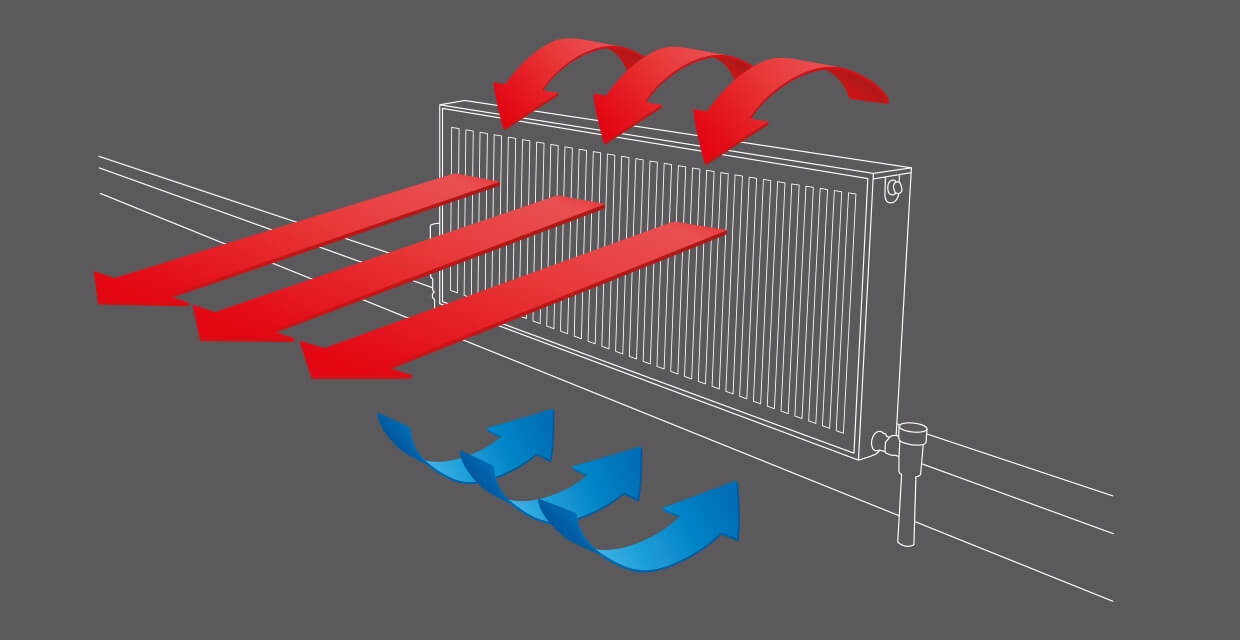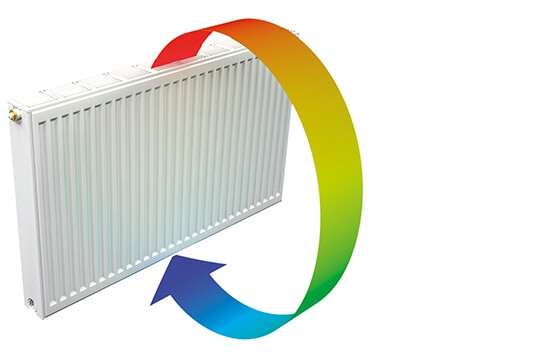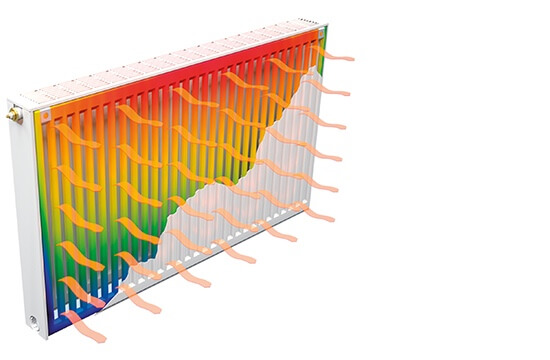How a radiator works
HOW A RADIATOR WORKS
A radiator is the heat emitting component of a hydronic central heating system, supplied with hot water from a heat source, such as a boiler, solar panel or ground source heat pump. The hot water is circulated within this system, transferring from the source to the radiator. The system is typically controlled via a time switch, centrally located thermostat and local radiator thermostats. Heat is then delivered to the room via a combination of convection and radiation.


HEAT OUTPUT
-

80% convected
Hot water within the radiator heats up the air around it, which expands and rises into the room. This displaces cooler air which sinks and ultimately flows towards the radiator. The room progressively gets warmer as the radiator heats up the cooler air in a continuous cycle. This process is a convection current and accounts for approximately 80% of the heat output of the radiator.
-

20% radiant
In addition to this, radiant heat is emitted directly to other objects in the room. This is via infra-red radiation which travels in straight lines independent of air flow in the room. This accounts for the remaining 20% of the heat output of the radiator.

